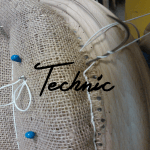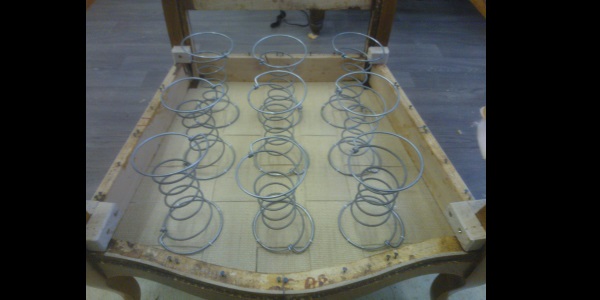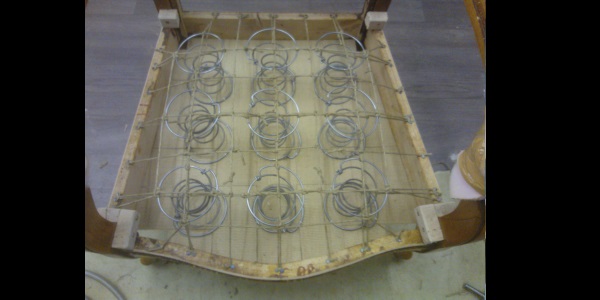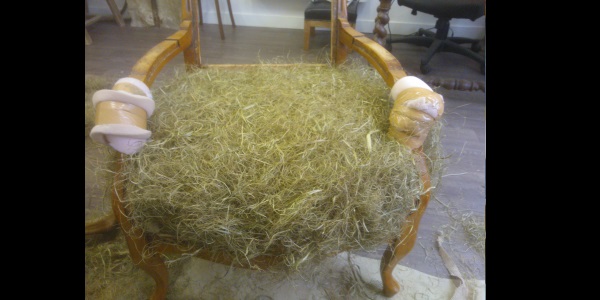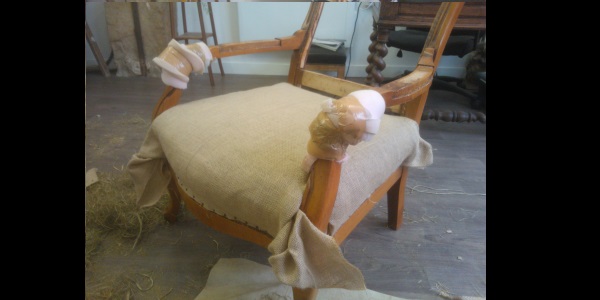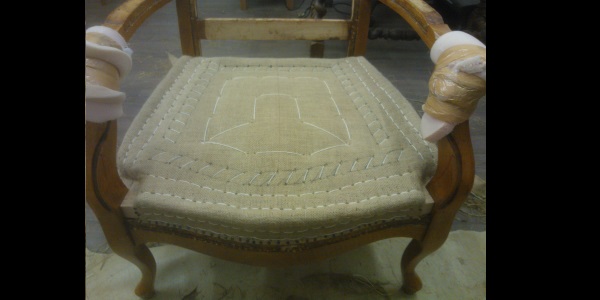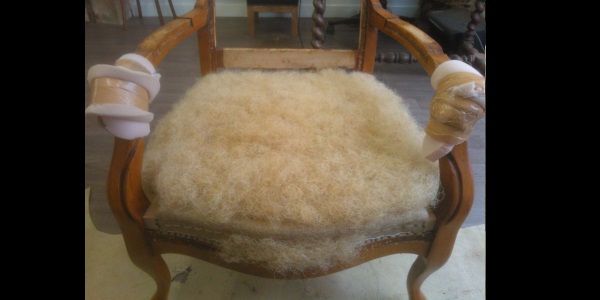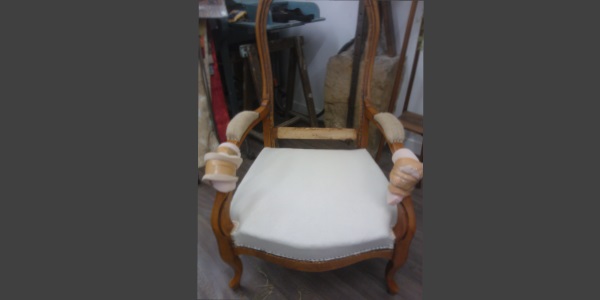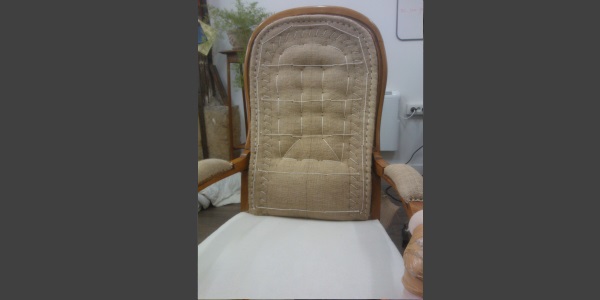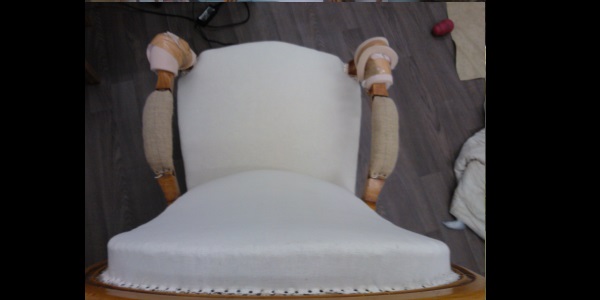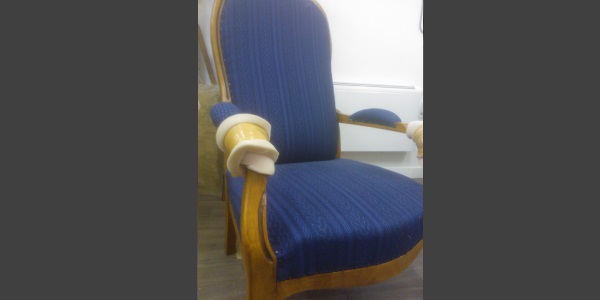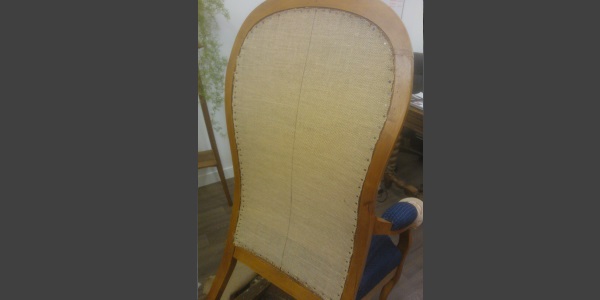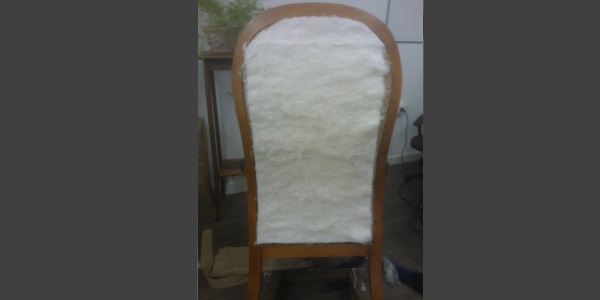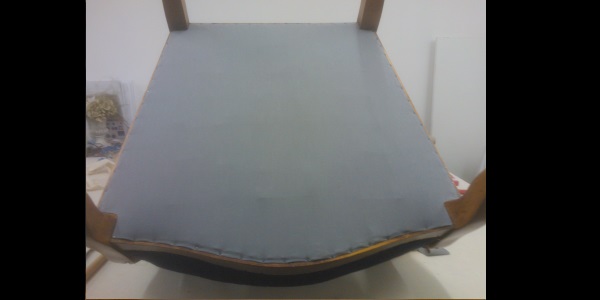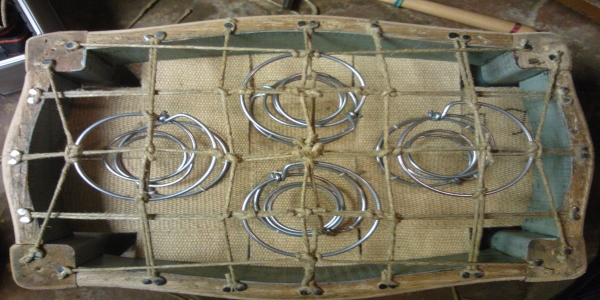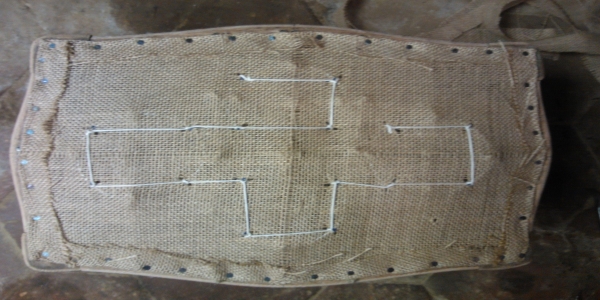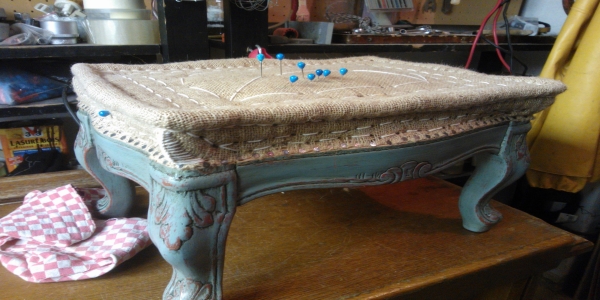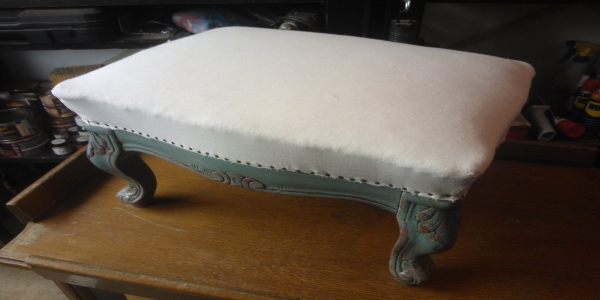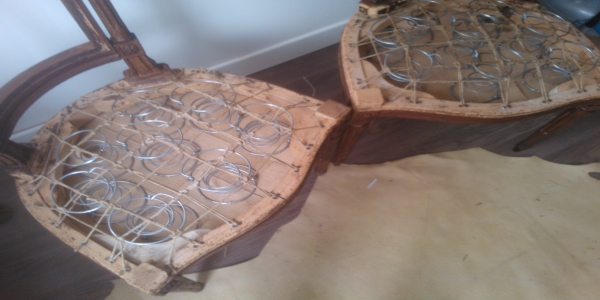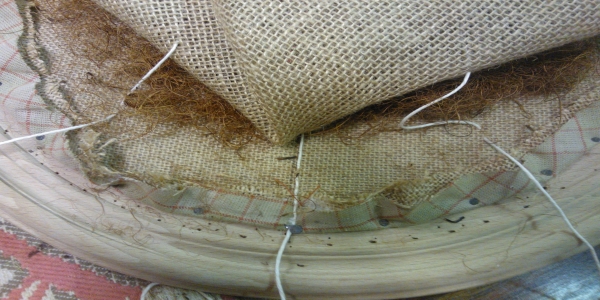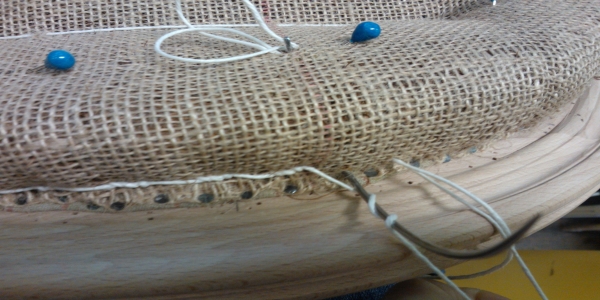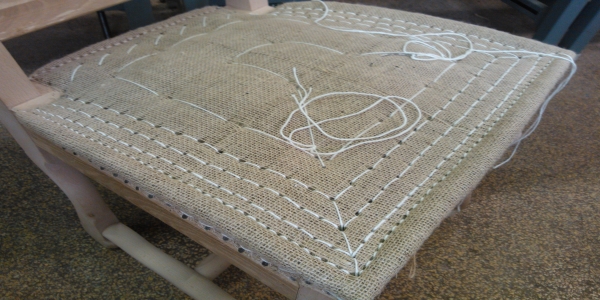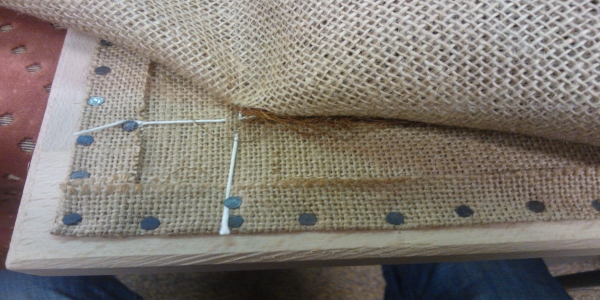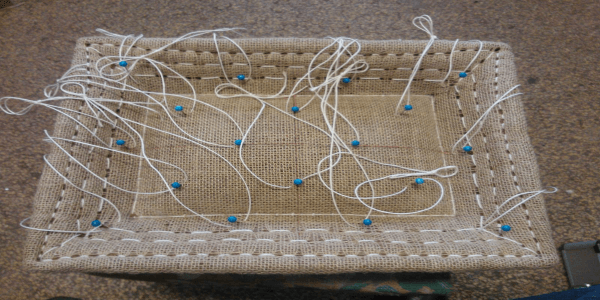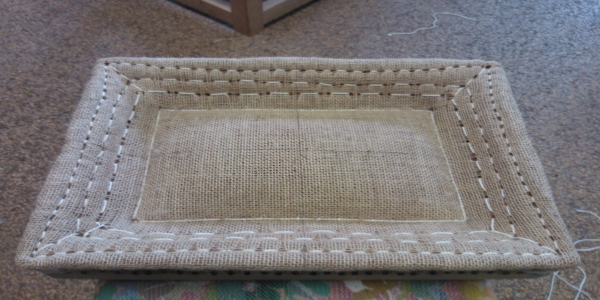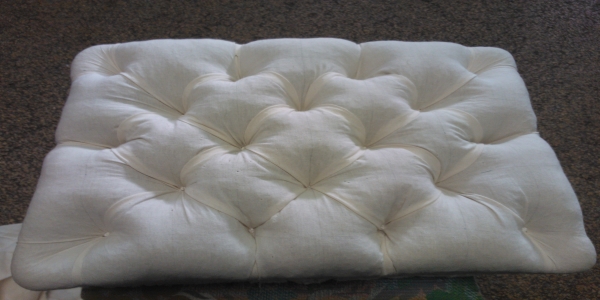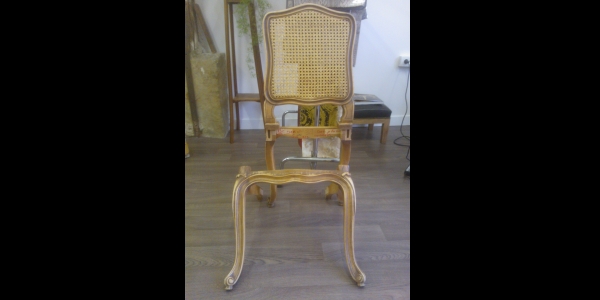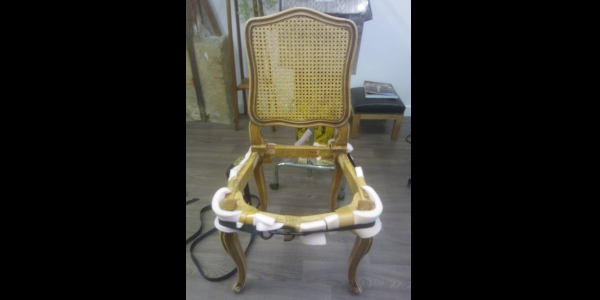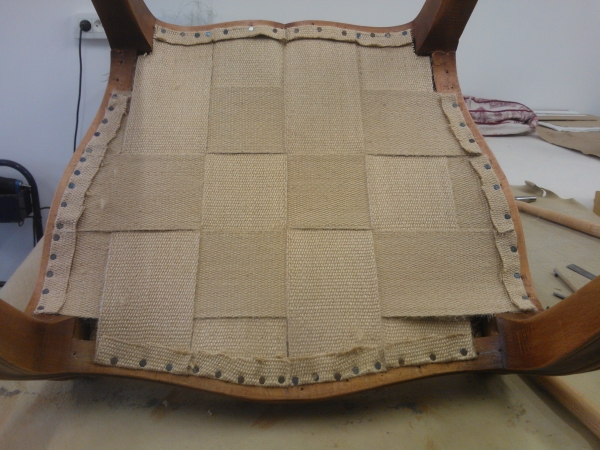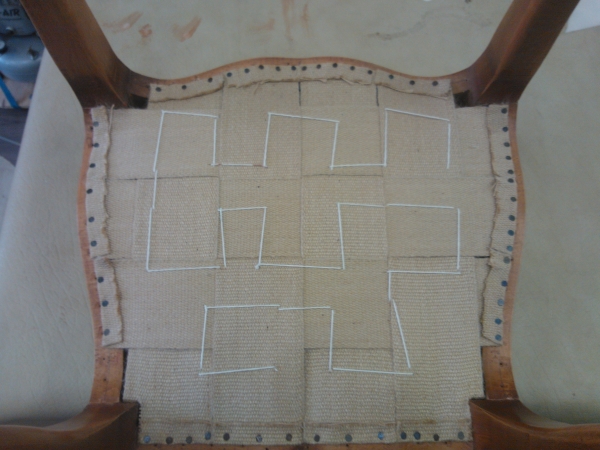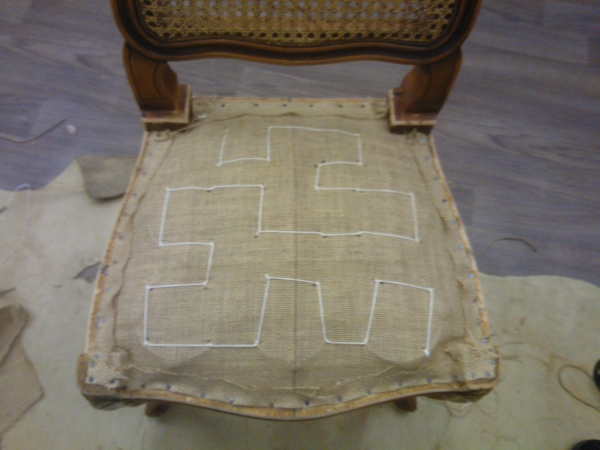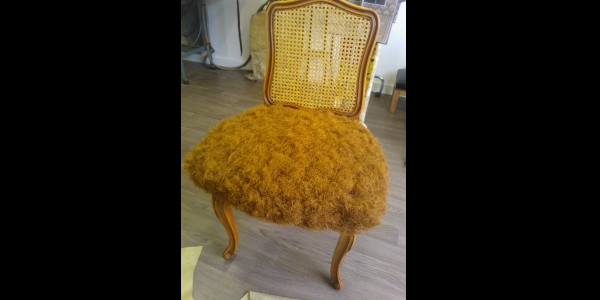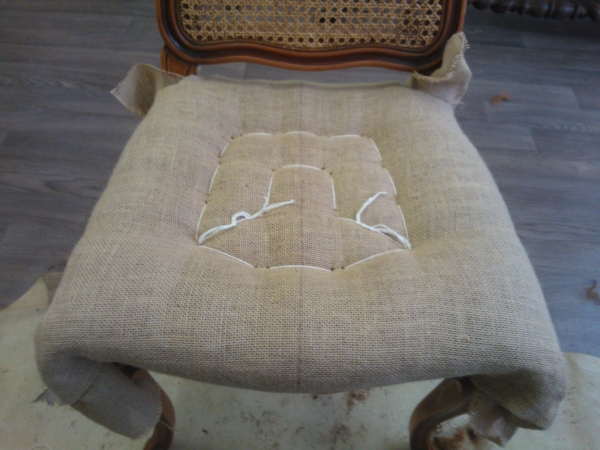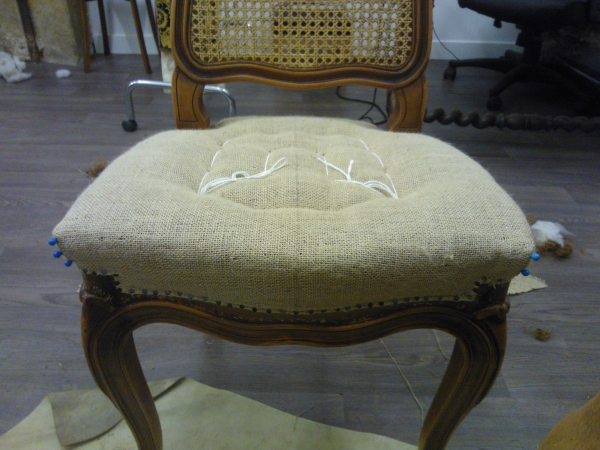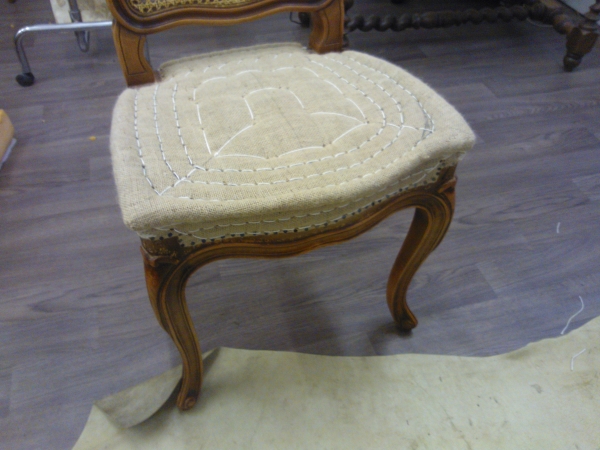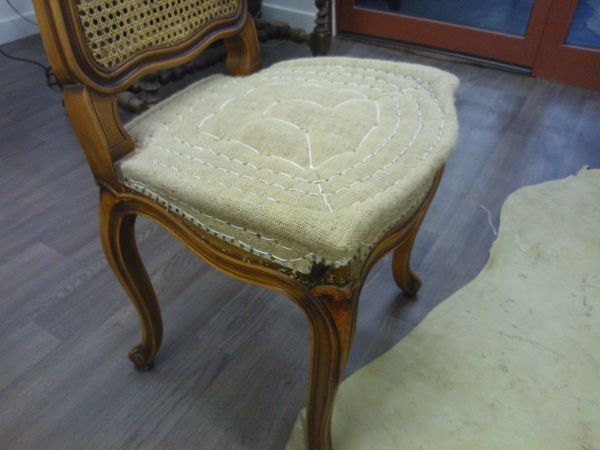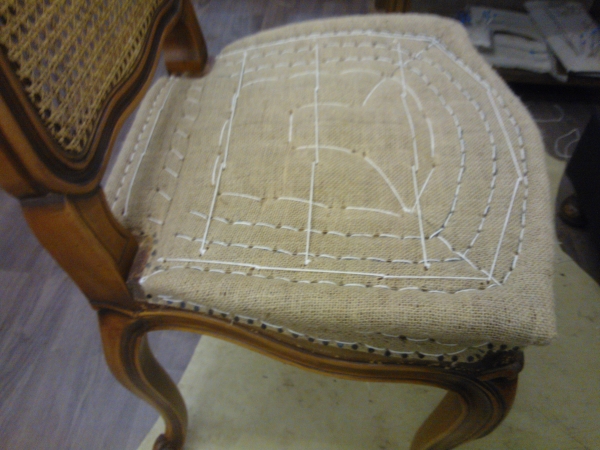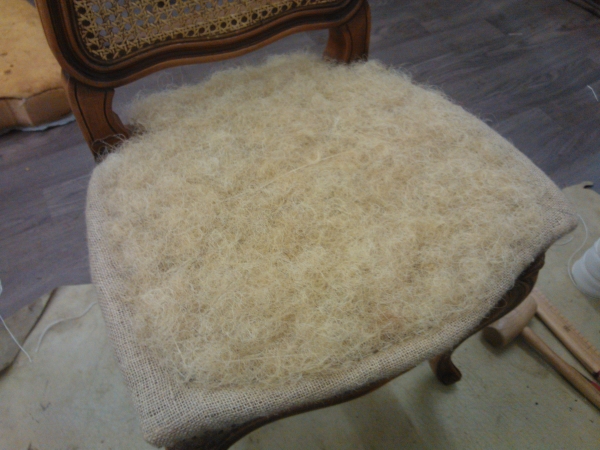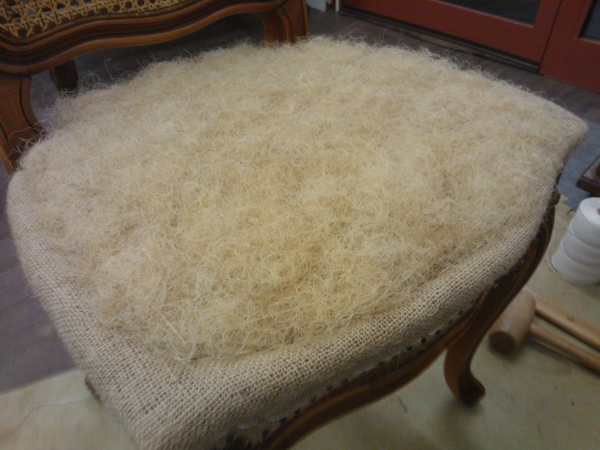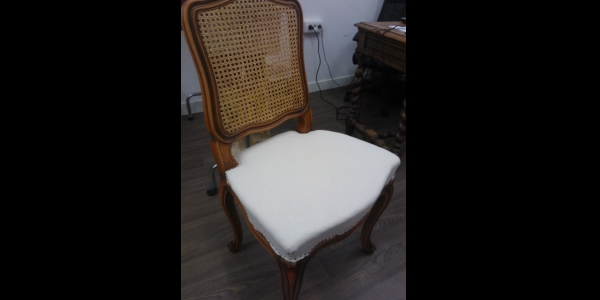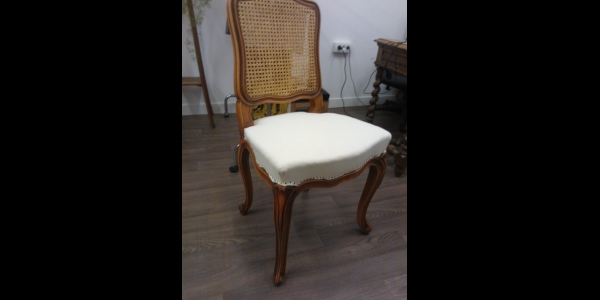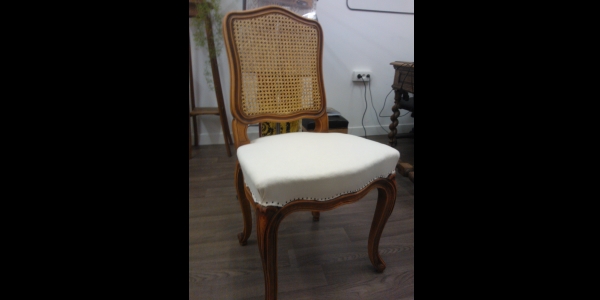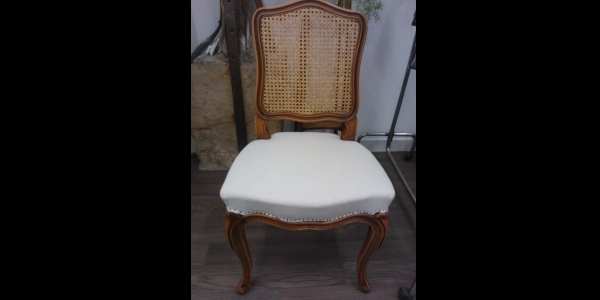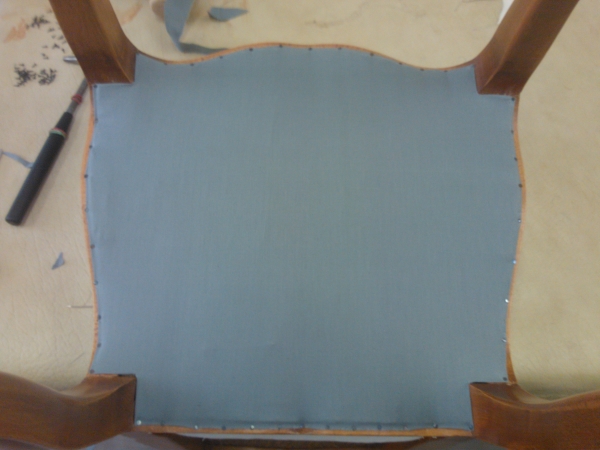Technic and story of tapisser
Traditional trimming
Formerly, our forefathers used leaf fiber as main material of trimming.
Other materials were, too, completely natural: cloths, cottons, belts, ...
Gradually, the foam overrode the leaf fiber. His cost of implementation being less important than the hair and the taste of customers for more comfortable armchairs, we make that the leaf fiber disappeared little by little from our seats.
Nevertheless we begin to realize the impact of the chemical materials on our environment, and once more solutions can find themselves in past.
That why, a return in the traditional trimming allows in certain cases to bind ecology and economy.
Certainly more expensive, a trimming in leaf fiber has a life expectancy much superior to a foam trimming.
To choose the trimming in hair, it is to invest for our future environment and to immortalize an ancestral knowledge.
Stuffing, is a derived term of "Formetier or fornetier", the one who gives or executes forms on a long seat without seatback nor headrests, and it until the XIIth century.
After this period, the direct ancestor of the modern Upholsterer-Stuffing, is the "Upholsterer Courtepointier", it is the one who sells furniture and tapestries.
He also recovers beds, seats, ...
By 1550, stuffing of this period begins to use the filling, then the animal fiber.
It is Louis XIII who by his edicts is going to organize and to codify the various branches of the job.
Louis XIV is going to attribute to the Upholsterer, besides his usual works, the right to make and to place curtains, valance, ...
In the XVIIIth century, among of other one art professions, the Upholsterer been a member of the house of the great lords and has the right to carry the sword.
Under Louis XVI, the job evolves with the appearance of new technics and it is under the empire that this one will reach the highest degree of technicality, sharpness and perfection.
With the arrival of the railroad, the master's degree of forges becomes industrialized, and the spring makes definitively its appearance. Allied to the fiber, this type of filling will remain for ever the most interesting in term of technical realization and durability for the customer.
With the chemical industry, is going to appear the foam to polyeter and the job is profoundly going to be transformed. A major left seats are realized in factory, in countries where the workforce is at a lower cost and the used technics very simplified in one concerns economic.
Only some strimming, less and less numerous artisan, resist and immortalize an ancestral knowledge based on the comfort, but especially on the respect for techniques, insuring the durability and the quality seats.
The upholsterer-stuffing of today must be capable of realizing side dishes "in the older" (fiber) or modern (foam) and it on every type of seats antique or contemporary, home-made or industrial.
